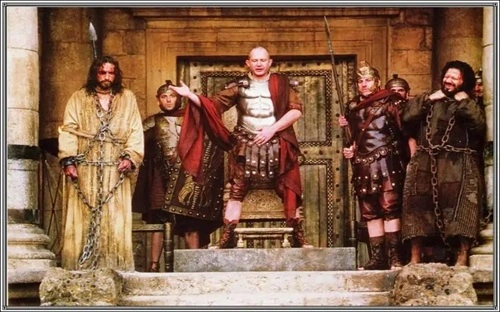Barabbas is a figure whose name resonates throughout the Christian tradition, primarily due to his role in the trial of Jesus Christ as recounted in the New Testament. Often remembered as the man chosen for release over Jesus, Barabbas is a complex character whose story raises questions about justice, guilt, and the human condition. Here are ten interesting facts about Barabbas that provide insight into his life, historical context, and the implications of his actions.

1. Barabbas’ Name Means “Son of the Father”
The name Barabbas comes from the Aramaic words “bar” meaning “son” and “abba” meaning “father.” This name holds significant symbolic meaning, particularly in the context of the Gospels, where Barabbas is presented as a choice against Jesus, who is often referred to as the Son of God. This juxtaposition serves as a powerful commentary on the nature of fatherhood, authority, and the choices we make.
2. He Was a Notorious Criminal
According to the Gospels, Barabbas was known as a notorious prisoner at the time of Jesus’ trial. He was described as a “robber” or “revolutionary,” depending on the Gospel account. Barabbas had been arrested for committing acts of violence against the Roman authorities, which likely made him a popular figure among those who opposed Roman rule. His notoriety plays a significant role in the crowd’s choice to free him instead of Jesus.
3. His Release Was a Custom During Passover
The release of a prisoner during Passover was a custom that the Roman governor Pontius Pilate upheld to appease the Jewish people. This practice was a form of clemency during the Passover festival, which commemorates the Israelites’ exodus from Egypt. During this specific Passover, Pilate offered the crowd a choice between releasing Barabbas or Jesus. The decision made by the crowd ultimately highlights the tension between political authority and popular sentiment.
4. The Gospels Present Different Details
The accounts of Barabbas’ release are found in all four Gospels—Matthew, Mark, Luke, and John—but there are notable differences in the details. For example, the Gospel of Matthew mentions that Barabbas was infamous for murder, while John refers to him as a revolutionary. These variations suggest that while Barabbas is a significant figure, the exact details of his actions may have varied among early Christian communities.
5. Barabbas and Jesus: A Symbolic Contrast
The story of Barabbas and Jesus serves as a profound metaphor for the choices humanity faces. Barabbas represents rebellion and violence, while Jesus embodies peace, compassion, and self-sacrifice. The choice presented to the crowd—between Barabbas, a man who had incited insurrection, and Jesus, who preached love and forgiveness—highlights the conflicting values present in society. This dichotomy continues to resonate today as people grapple with issues of justice, morality, and the consequences of their choices.
6. His Story Is Not Just About Criminality
While Barabbas is often remembered solely as a criminal, his story invites deeper reflection on themes of redemption and grace. In many Christian interpretations, Barabbas represents humanity’s sinful nature and the need for salvation. The fact that he was released while Jesus was condemned reflects the grace extended to all, suggesting that even those deemed unworthy can find freedom and redemption.
7. Barabbas’ Fate Remains Uncertain
The New Testament does not provide any information about what happened to Barabbas after his release. His fate remains a mystery, leading to speculation and interpretation among theologians and scholars. Some suggest he may have gone on to continue his life of crime, while others propose that he could have had a change of heart after witnessing the events surrounding Jesus’ crucifixion. This ambiguity adds to the intrigue surrounding his character and story.
8. Cultural Representations of Barabbas
Barabbas has been depicted in various cultural works, including literature, film, and theater. One of the most notable representations is in the 1953 film Barabbas, starring Anthony Quinn. This film explores the life of Barabbas after his release, offering a dramatized account of his struggles and redemption. These portrayals help to humanize Barabbas, inviting audiences to consider the complexities of his character beyond his label as a criminal.
9. Barabbas’ Legacy in Christianity
Barabbas’ role in the Passion narrative has implications for Christian theology and the understanding of sin and forgiveness. His choice serves as a reminder of the fundamental Christian belief that grace is available to all, regardless of their past actions. The story invites believers to reflect on their own choices and the importance of compassion and mercy in the face of wrongdoing.
10. Barabbas as a Figure of the Oppressed
In modern interpretations, Barabbas can be seen as a symbol of the oppressed and marginalized. His release over Jesus speaks to societal dynamics where those in power may favor certain figures while condemning others unjustly. This interpretation resonates with contemporary discussions about justice, equity, and the voices of the marginalized in society. Barabbas’ story encourages reflection on the complexities of social justice and the need for compassionate action.
The story of Barabbas offers a rich tapestry of themes, symbols, and lessons that resonate with audiences today. From his contrasting portrayal alongside Jesus to the moral dilemmas presented in his narrative, Barabbas serves as a powerful figure for reflection on justice, redemption, and the choices we make. Each of these interesting facts highlights the depth of his character and the significance of his role in the New Testament, inviting us to explore the broader implications of his story in both historical and contemporary contexts. Whether viewed through the lens of theology, history, or social commentary, Barabbas remains a compelling figure whose legacy continues to provoke thought and discussion.



